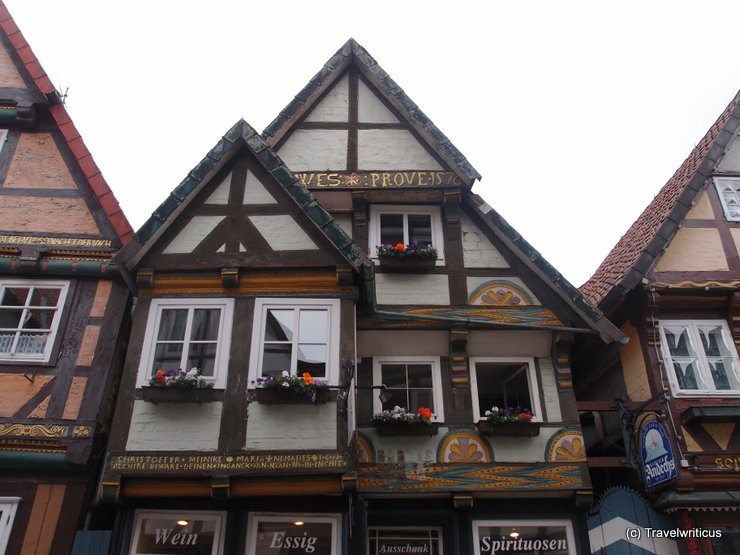
Celle offers more than 400 half-timbered houses in the old part of the city.
You only see what you know (Goethe)

Celle offers more than 400 half-timbered houses in the old part of the city.
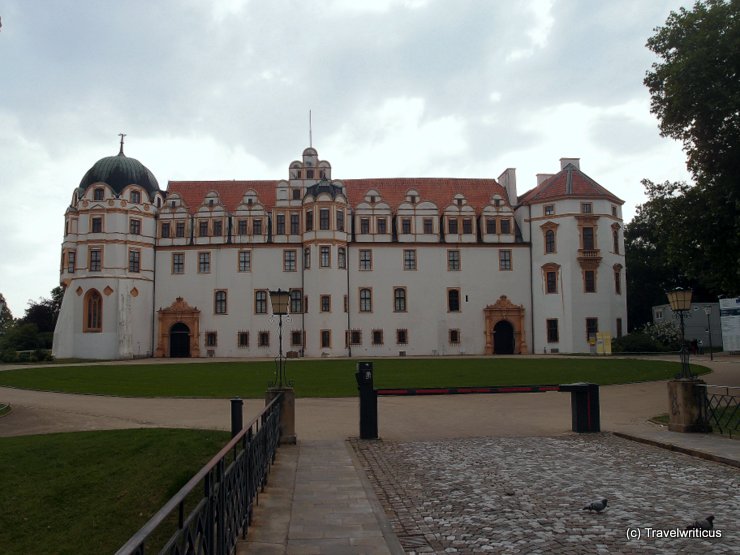
Celle Castle, located in the town of Celle in Lower Saxony, is a Renaissance and Baroque palace with over 700 years of history. Originally built as a fortified castle in the 13th century, it transformed into a residence for the House of Brunswick-Lüneburg.
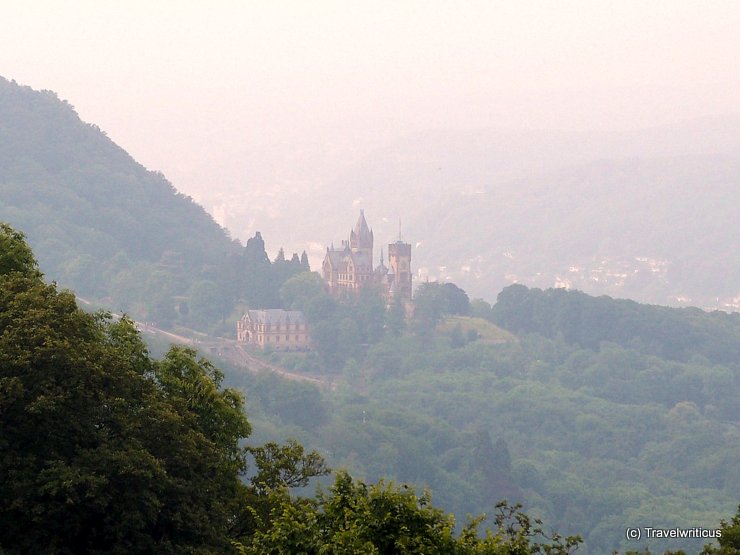
Drachenburg Castle (Schloss Drachenburg) is a late 19th-century building in the style of a fairy-tale palace. Its founder was Baron Stephan von Sarter (1833–1902), a broker and banker. I took the photo above from the terrace of the nearby Petersberg Grand Hotel.
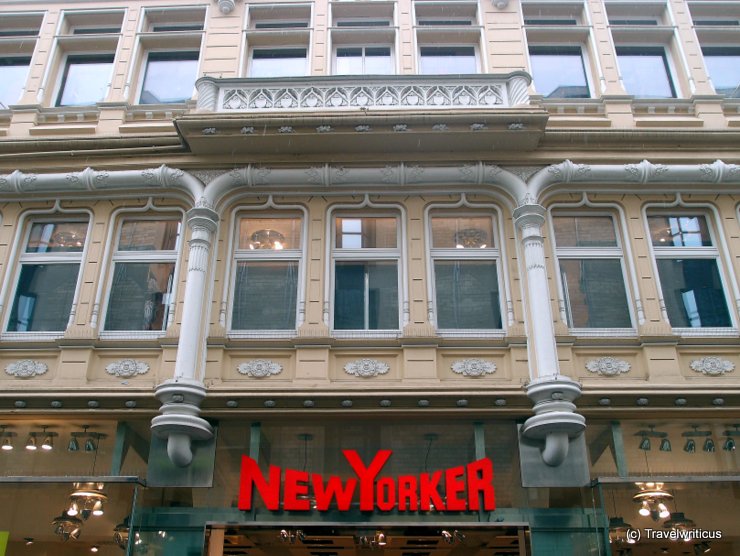
I had already seen a lot of buildings built in a decorative style but this one looked very special to me.
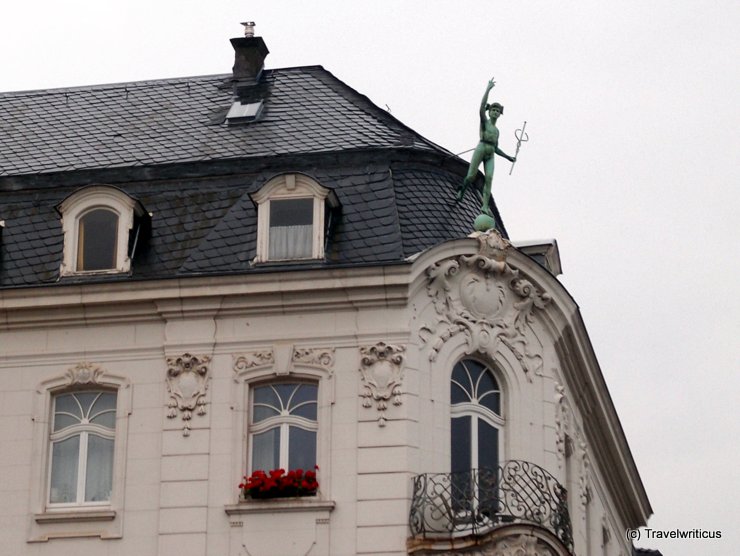
While walking along the streets of Bonn I came across this sculpture of Hermes. Famously he is the god of the travellers. Well, I wonder if Hermes could be the god of the travel bloggers as well. What do you think?
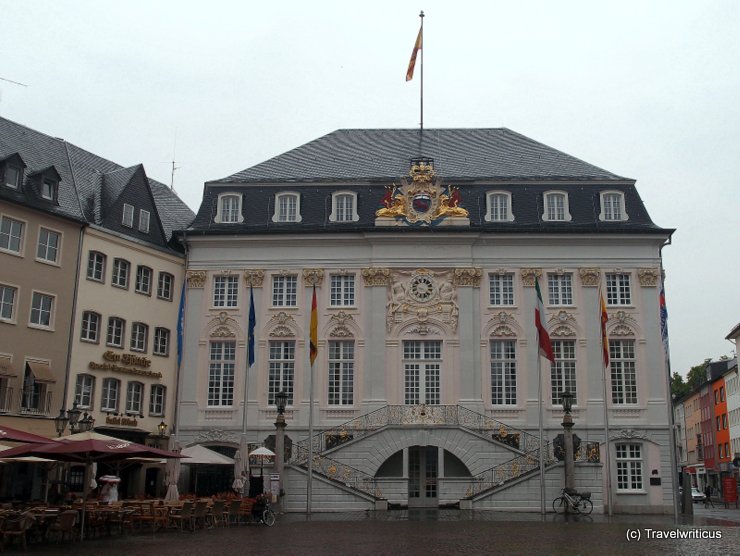
Unfortunately it was pretty rainy during my visit in Bonn. I got a nice photo of the city hall though. Many years ago I watched a ‘Rathaussturm’ here. Have you already heard about this carnival tradition? At the end of the carnival period the carnival revellers supported by a female guard ‘take over the power’ at the city hall for a few days.
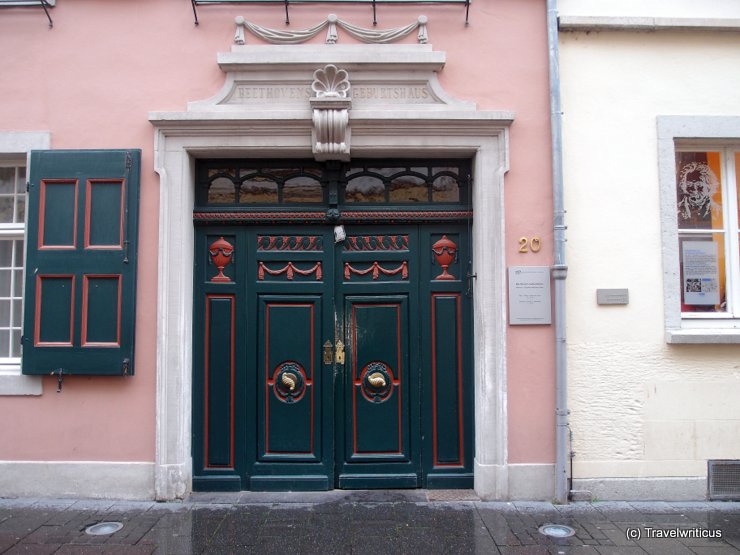
The first stop on our city walk in Bonn: The birthplace of composer Ludwig van Beethoven (1770-1827). At the Beethoven-Haus, I was especially impressed by a collection of hearing aids for the deaf artist.

One of my most favourite moments in Bonn: A visit at the Chamber Music Hall (Kammermusiksaal). I was especially impressed by the elegance of the hall and the view from the big window on the right side. From there one can see the inner yard of Beethoven’s birthplace.

Lunchtime in Bonn! At the Restaurant Bönnsch, we got in touch with these special-shaped glasses.
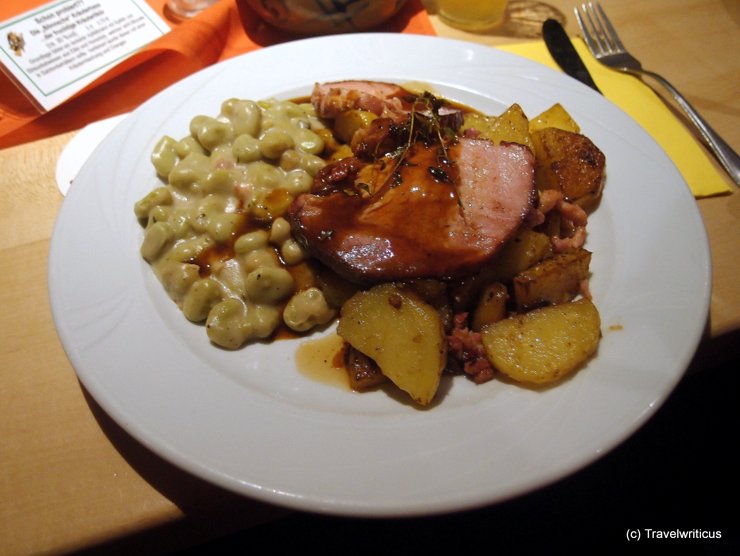
For lunch I had a Rhineland speciality: ‘Rheinische Dicke Bohnen’. From the menu: ‘Mit Bohnenkraut abgeschmeckt, mit gebratenen Kasselerscheiben in einer Thymiansauce serviert, als Beilage servieren wir knusprige Bratkartoffel’
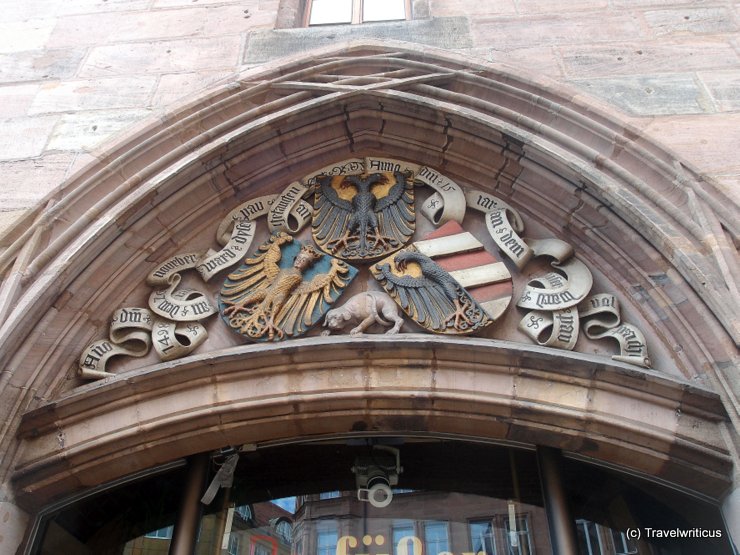
On the left side, you see the great emblem (Große Wappen). On the right side, you see the minor emblem (Kleine Wappen) of Nuremberg. The left one is generally used by administrative bodies, whereas the right one is used by some companies.

I was told this part at the tympanum of St. Lorenz is showing the ‘Ascension of Jesus’. For me this is really an odd illustration as one can see only the feet of Jesus.
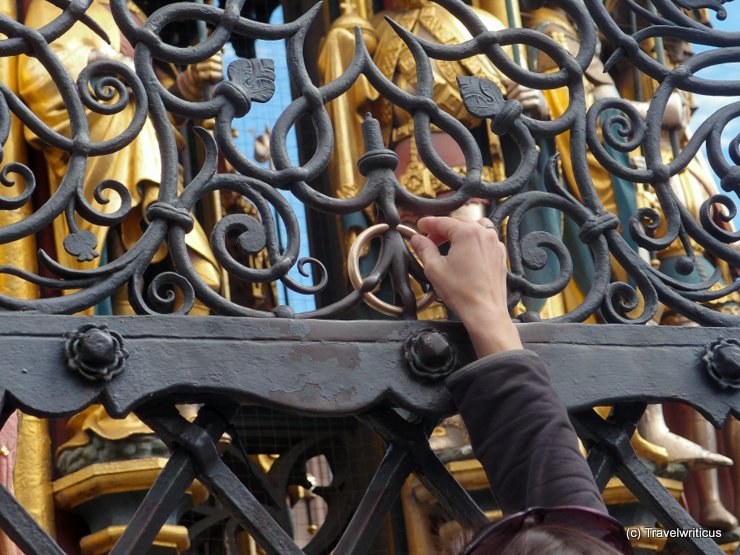
The ‘Schöner Brunnen’ is one of the most beautiful fountains I have ever seen. You find it in a central square in Nuremberg. A ring embedded in its fence is said to bring good luck to those who spin. Another version told me spinning the ring raises your fertility. So be careful!